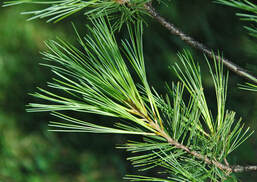 Evergreen Scene It’s a pine! It’s a cedar! It’s a….evergreen of sorts. Now that our deciduous trees have given up the ghost until spring, let’s take this opportunity to learn about some of the towering stars of the current show, evergreen trees. Here in Virginia we can find pines, cedar, spruce, yew, and even redwoods. Let’s take a look at how we can easily tell the difference between these sometimes pungent, sometimes prickly trees. Pines like to give their needles buddies. If the tree has needles in groups of two, three, or five you can bet it’s a pine. If you pluck a needle and it doesn’t readily roll between your fingers, it’s probably a fir. If the needles are long and in groups of 3, that’s our native loblolly. Five needles gives you a white pine and two needles that are trying to entwine with each other tells you it’s our namesake, the Virginia Pine. When it comes to cedar we have a juniper. Our native Eastern Redcedar is actually in the juniper family which is why you may think of gin when you smell the crushed small blue berries growing with its scaly leaves. Virginia’s endangered northern flying squirrels are definitely familiar with our native Red Spruce, also known as a Yellow Spruce just to keep things confusing. Though they probably don’t need to stop and check for the 4-sided, short, yellowish-green needles on pegs. Janet Douberly wrote this article to help her learn how to ID conifers and hopes it helps you too. This article was first published in the January 2024 edition of Front Porch Magazine. To view the full publication visit www.frontporchfredericksburg.com
0 Comments
Leave a Reply. |
AuthorWrite something about yourself. No need to be fancy, just an overview. Archives
February 2024
Categories |
 RSS Feed
RSS Feed